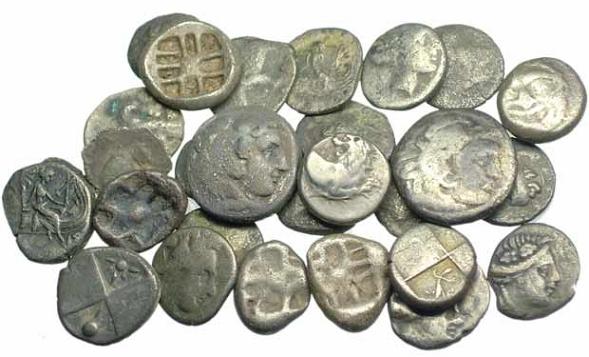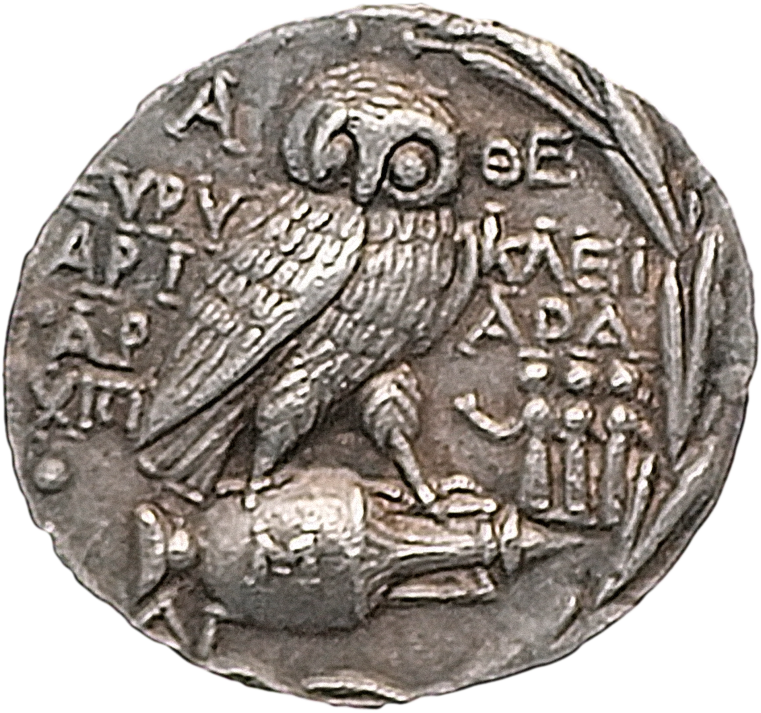Greek Coins

Greek Coins
Ancient Greek coins have a variety of attributes that enable differentiation between the currencies of individual poleis. Each polis independently designed and created its own coins, with symbols that were representative of the deities and heroes important to that particular government. This theme supersedes all of the other trends in Greek coin making throughout the centuries.

the period of ancient coins is simple and crude. Instead of spherical symmetry, they estimate lumps of metal that has been pressed into irregular disks. Usually made from gold, silver, or electrum, they have a basic impression of the patron god of that comes from the policy.

During the Classical period, coin-making techniques are refined. Most coin printed in gold or silver. More consistent coin-shaped, with a complex representation of a god or a hero on one side and symbols for policies on the reverse. The stele was originally incorporated into the designs for the coins were created during the Classical period. Coin designer special attention to the meaning of the symbols, and use them to incorporate political messages into the currency. For example, a coin depicting an owl (a symbol of wisdom) is usually from Athens during the fourth centuries BC and the fifth, when the policy was focused on the image illustrates the power of peace and strength.

coins are not as detailed as the Hellenistic period Classical period coins because they are designed to make it easier to mass produce a wider circulation. They are most often printed in gold and often much larger than its predecessor. While previous chips only show pictures of animals and inanimate objects, for the first time, the Greek coins depicted the lives of people, such as rulers profile policy issue. The name of the ruler may be written in the painting, and behind the coin is usually a symbol for the policyholder.

Greek coin denominations determined by weight. gold coin measured in terms stater, which can be divided into religious groups and smaller. Silver coin is measured in terms of the drachma, which can be divided into smaller denominations or multiplied in the larger denomination. Bronze coins are measured in terms litra. Although standardization in the assignment of names for units of measure, however, each policy defines different measurement units, so how much of a stater, drachm or litra weighed in a single policy does not always correlate with body weight for the same units of measurement in other poleis. So, what is the dram in one policy may be too light or too heavy to be used as a dram in the other policyholders.



Greek Coins
Comments
Post a Comment
Dear Visitor,
Please feel free to give your comment. Which picture is the best?
Thanks for your comment.